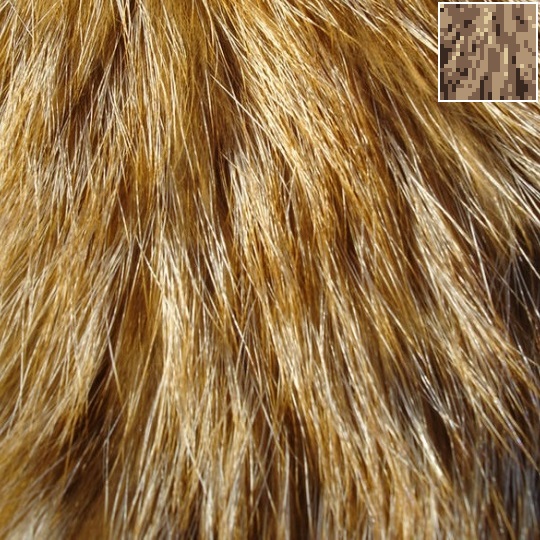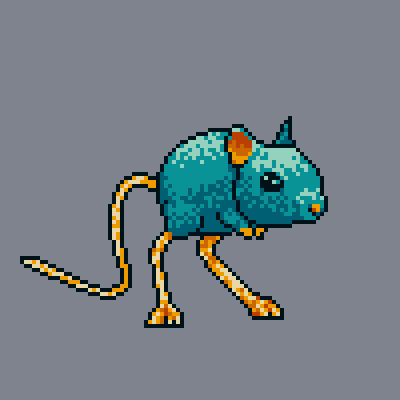With most forms of art, you can use broad strokes to create the feeling of a certain texture, and then zoom in to fine tune it if necessary. With pixel art, however, you're already fully zoomed in. Your brush is the size of the smallest part of your image. It requires much more careful thought and use of shapes to hint at texture, rather than show it explicitly.

Let's begin with what not to do. Many newer pixel artists fall into the same trap when trying to create texture: noise. A random pattern of scattered pixels that, in some ways, looks like a photograph has been shrunk down to a pixel art size. Noise looks untidy at best and, in extreme cases, can make the image harder to read and maybe even unpleasant to look at.

When creating a fur texture, start by shading the piece like it is entirely smooth. Be careful not to use Pillow Shading in your approach. Next, carve out some triangular or square shapes in the parts of the piece where noticeable tufts might be visible. In the jerboa image, this might be around the cheeks and the top of the legs.
Next, use a conservative amount of dithering (a checkerboard pattern of two colours, see below) in the spots where there might not be room for these bigger shapes. Dithering, when used sparingly, can be very useful in creating texture.

Fur and hair were some of the last textures I figured out how to recreate in pixel art, but are now two of the easiest for me to do. Once I stopped trying to perfectly match the texture 1:1, and learned to make some more stylistic choices, it became a much easier and much more enjoyable experience.
Have fun trying to create fur yourself! I'd love to see what you come up with over on our Discord.



